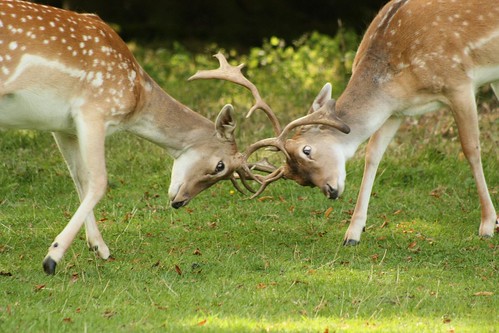
Strawberries
55mm, 1/4sec, f/9, ISO-400
55mm, 1/4sec, f/10, ISO-400 (average)
55mm, 1/4sec, f/11, ISO-400
Yellow Rose
55mm, 1/15sec, f/9, ISO-400
55mm, 1/15sec, f/10, ISO-400 (average)
55mm, 1/15sec, f/11, ISO-400
The Sky
300mm, 1/400sec, f/8, ISO-200
300mm, 1/400sec, f/10, ISO-200 (average)
300mm, 1/400sec, f/14, ISO-200
I have found that my averages are the closest match to the colours on the colour circle apart from Blue. The Sky is a very bright blue and is slightly too bright for this project. I have photographed an unnaturally coloured blue t-shirt at the average exposure and have found this subject matches the colour circle a lot better.
55mm, 1/10sec, f/10, ISO-400
I shall take three photographs of each secondary colour the same as I did for primary. An aperture of f/10 shall still be the average.
An Orange
55mm, 1/8sec, f/9, ISO-400
55mm, 1/8sec, f/11, ISO-400
Violet Blanket
28mm, 1/20sec, f/9, ISO-400
28mm, 1/20sec, f/10, ISO-400 (average)
28mm, 1/20sec, f/11, ISO-400
An Apple
55mm, 1/8sec, f/9, ISO-400
55mm, 1/8sec, f/11, ISO-400
Within this project I have found that my over-exposed photograph of Orange, under-exposed photograph of Violet and average photograph of Green most closely match the shades on the colour circle. I struggled to find any subjects that are naturally Violet and big enough to fill the frame so therefore I had to settle for an unnaturally coloured blanket. When searching for my Orange and Green subjects I came to the conclusion that an Orange and an Apple most closely matched the colours of the colour circle.
Black Painted Ceiling
51mm, 1/2sec, f/10, ISO-400 (average)
51mm, 1/2sec, f/9, ISO-400
51mm, 1/2sec, f/8, ISO-400
51mm, 1/2sec, f/7.1, ISO-400
51mm, 1/2sec, f/6.3, ISO-400
51mm, 1/2sec, f/5.6, ISO-400
White Painted Ceiling
51mm, 1/25sec, f/10, ISO-400 (average)
51mm, 1/25sec, f/11, ISO-400
51mm, 1/25sec, f/13, ISO-400
51mm, 1/25sec, f/14, ISO-400
51mm, 1/25sec, f/16, ISO-400
51mm, 1/25sec, f/18, ISO-400
With an aperture wider than f/9 the "Black" photographs begin to become noticeably grey. Also with the "White" photographs, after the second image I would no longer describe the scene as white; with an aperture smaller than f/11 the "White" photographs look grey and the last photograph, at f/18, even appears Black.
When looking closely at the Black photographs a slight blue hue can be seen and when looking at the White they almost appear slightly yellow. After checking the values of my Black and White images in Photoshop I ave discovered that my average captures are not true Black and White. Black should have a value of no more than 2 whereas White should be no less than 253. My average Black shows a lowest value of 25 and White shows the highest of 150. I shall have to retry this project and choose a subject with a smoother surface. I don't believe that my camera's meter was acquiring an accurate enough reading.
A photograph of true Black can only be achieved if no light what so ever reaches the camera's sensor. The complete opposite applies for true White; this can be achieved by aiming the lens at a white surface in bright sunlight and setting the camera's shutter to remain open for more than a minute with the widest aperture possible.
















